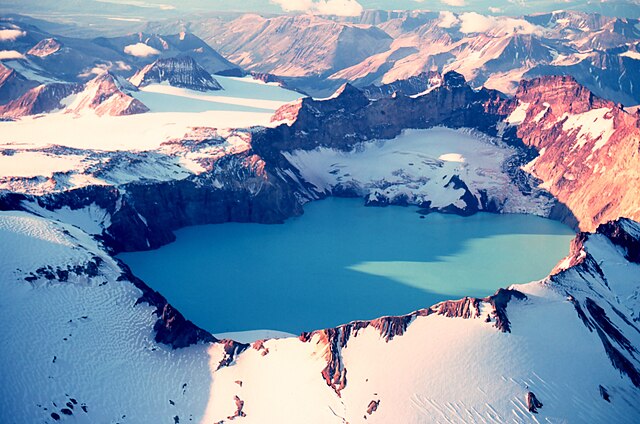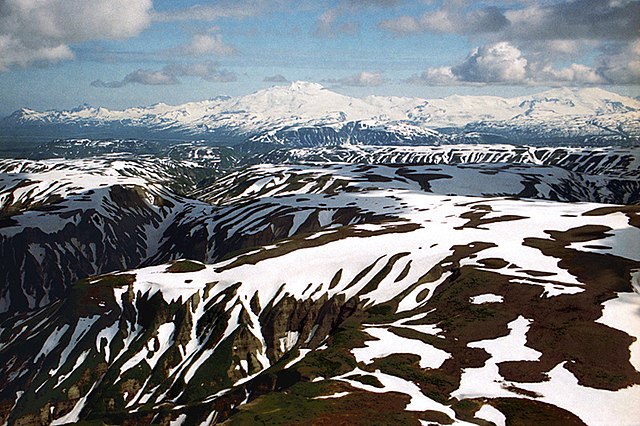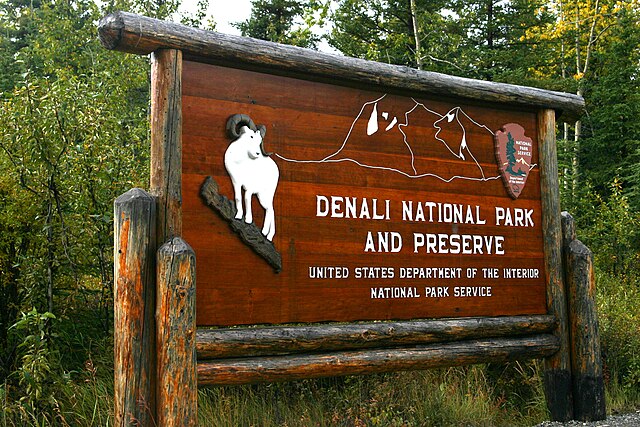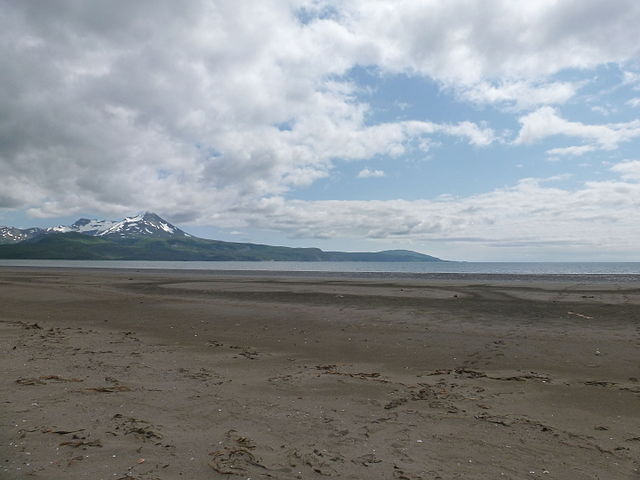Katmai National Park and Preserve
Katmai National Park and Preserve is an American national park and preserve in southwest Alaska, notable for the Valley of Ten Thousand Smokes and for its brown bears. The park and preserve encompass 4,093,077 acres, which is between the sizes of Connecticut and New Jersey. Most of the national park is a designated wilderness area. The park is named after Mount Katmai, its centerpiece stratovolcano. The park is located on the Alaska Peninsula, across from Kodiak Island, with headquarters in nearby King Salmon, about 290 miles (470 km) southwest of Anchorage. The area was first designated a national monument in 1918 to protect the area around the major 1912 volcanic eruption of Novarupta, which formed the Valley of Ten Thousand Smokes, a 40-square-mile (100 km2), 100-to-700-foot-deep pyroclastic flow. The park includes as many as 18 individual volcanoes, seven of which have been active since 1900.
The summit crater lake of Mount Katmai
3D image of the park created via Landsat data overlaid on a digital elevation model
Fourpeaked Mountain and Mount Douglas
Novarupta lava dome
There are 21 protected areas of the United States designated as national preserves. They were established by an act of Congress to protect areas that have resources often associated with national parks but where certain natural resource-extractive activities such as hunting and mining may be permitted, provided their natural values are preserved. The activities permitted in each national preserve vary depending on the enabling legislation of the unit. All national preserves are managed by the National Park Service (NPS) as part of the National Park System.
Entrance sign to Mojave National Preserve
Entrance sign to Denali National Park and Preserve
Image: Aniakchak Bay (22343282135)
Image: Tors in serpentine valley (9922806545)








